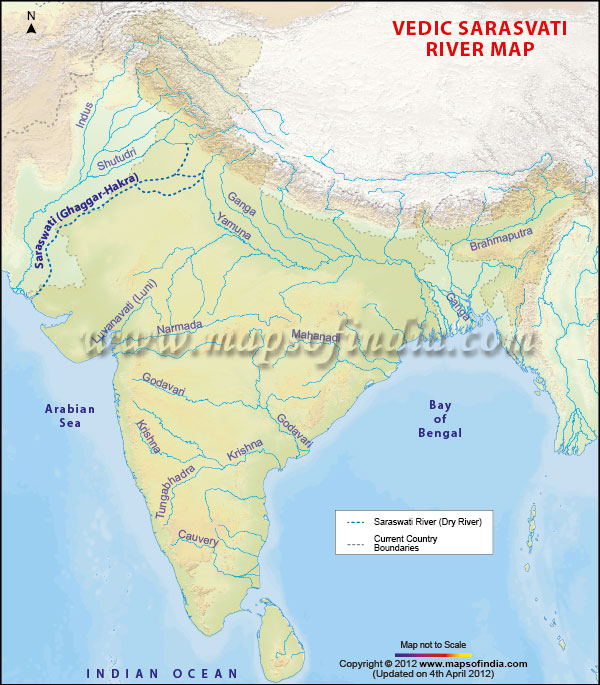Being one of the chief Rigvedic Rivers, as per the Hindu scripts and texts, Saraswati River is also famously known as Ghaggar-Hakra River. The Saraswati River is mentioned between the east of Yamuna and west of Sutlej in the early Rigvedic 'Nadistuti' hymn.
But later in the other Vedic scriptures it is said that the Saraswati River dried up in a desert. This river is a trans-boundary to India as well as to Pakistan. Also this river flows through both the nations together only in the monsoon.
In the area prior to the Ottu barrage, the Saraswati River is anciently known as the Ghaggar and where it crosses this barrage it becomes Hakra. The Ghaggar river acts as a tans-boundary river to India in the monsoon weather whereas the Hakra, which is an extension of Ghaggar in India becomes the dehydrated canal in Pakistan. The Ghaggar originates from the Shivalik Mountains of the
Himachal Pradesh and runs through the states of
Punjab,
Haryana and even flows through some parts of Rajasthan. Two irrigation channels are supplied by this river in
Rajasthan.
The foothills of the mountainous region of the district of Ambala in Haryana act as the source to the contemporary river Sarsuti which joins the Ghaggar in Punjab. Also the dehydrated Sutlej waterway meets the Ghaggar in Hanumangarh and this channel is known as the Naiwal Channel. The Chautang River (Drishadvati) meets the Ghaggar in Suratgarh.
It is believed that about some 10,000 years ago, during the liquefaction of the Ice Age glaciers in the Himalayan Mountain Ranges, the Ghaggar River was flowing in full strength, which can be understood by the broad palaeo-channel of this river. Also it is seen that it gradually joined the currently waterless canal of the Hakra River, which led to the river pouring into the Rann of Kutch.
The detention of the tributaries by the Yamuna River and Indus River System are believed to have caused the dehydration of this river. Also the cutting down of trees: Deforestation and overgrazing are the other reasons of the dehydration of the river later and the desiccation in most of its drainage basin. Though originally all these events took place much before than 1900 BCE, it is believed by some historians, researchers and environmentalists that all this might have taken place in the 1900 BCE itself.
lass="tablelink1" >

